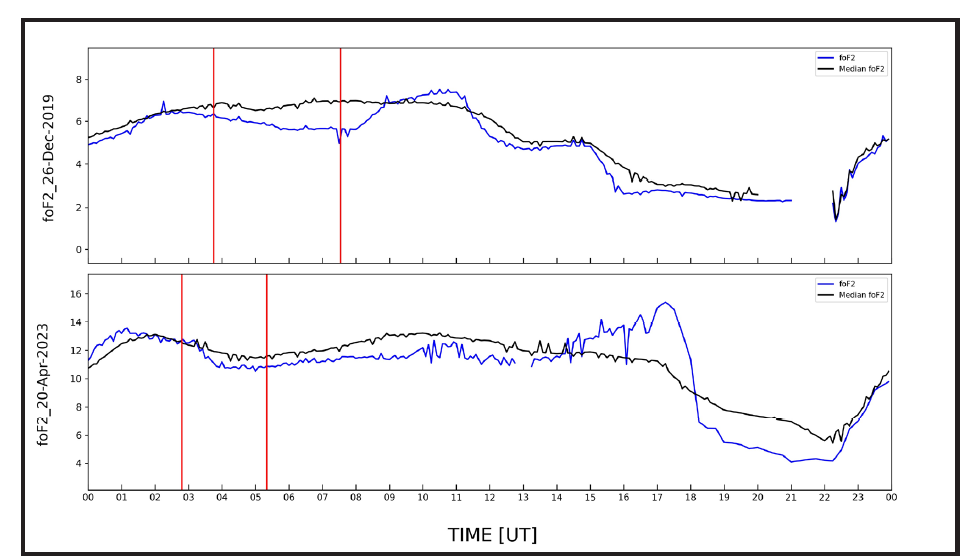Observations of Ionospheric Conditions Over Pontianak During The Partial Solar Eclipse
DOI:
https://doi.org/10.55981/ijoa.2024.2942Keywords:
Partial solar eclipse, Critical frequency, Total electron content, Declining phase, Recovery phaseAbstract
Solar energy plays a significant role in creating ionospheric layers through photoionization. However, when a solar eclipse occurs, the ionizing radiation from the sun will be obstructed by the moon, resulting in a decrease in ionization processes and a depletion of ionospheric plasma density. Our research examines the effects of two partial solar eclipse events that occurred on December 26, 2019 (Eclipse 1) and April 20, 2023 (Eclipse 2) over Pontianak. We observed changes in foF2 and TEC during these events. Our observations show that foF2 and TEC decreased at the start of a partial eclipse but returned to normal once the eclipse ended. The maximum decrease in foF2 observed was 1.88 MHz for Eclipse 1 and 1.26 MHz for Eclipse 2, while the decreases in TEC were 5.68 and 12.81 TECU for Eclipse 1 and 2 respectively. We noted that geomagnetic activity was quiet during both eclipses, indicating that the reduction in ionospheric parameters (TEC and foF2) is affected by the solar eclipse. During a solar eclipse, the decrease in ionization intensity results in a reduction in electron numbers in the ionospheric layers, leading to a reduction in TEC and foF2.

Downloads
Published
How to Cite
Issue
Section
License
Copyright (c) 2025 Suraina, Prayitno Abadi, Angga Yolanda Putra, Gerhana Puannandra Putri, Dadang Nurmali, Lambang Nurdiansah, Arif Rakhman, Ednofri, Muzirwan

This work is licensed under a Creative Commons Attribution-ShareAlike 4.0 International License.




